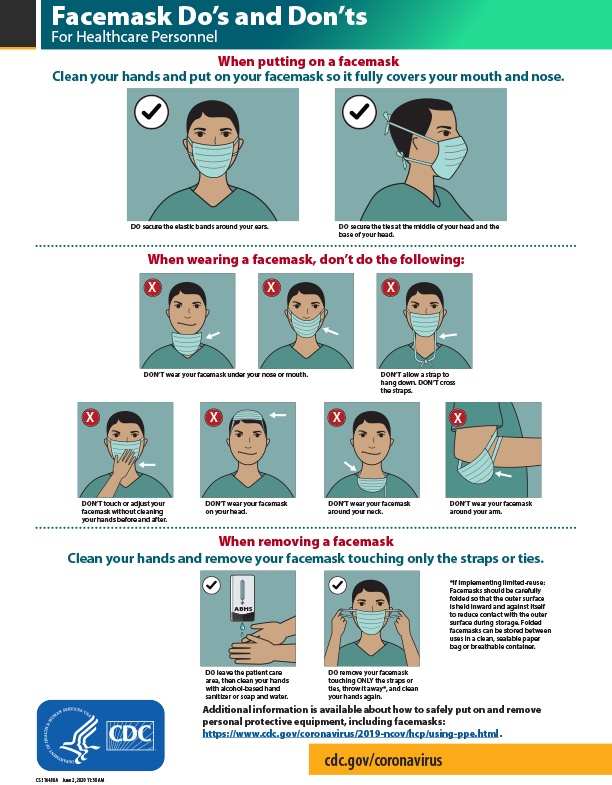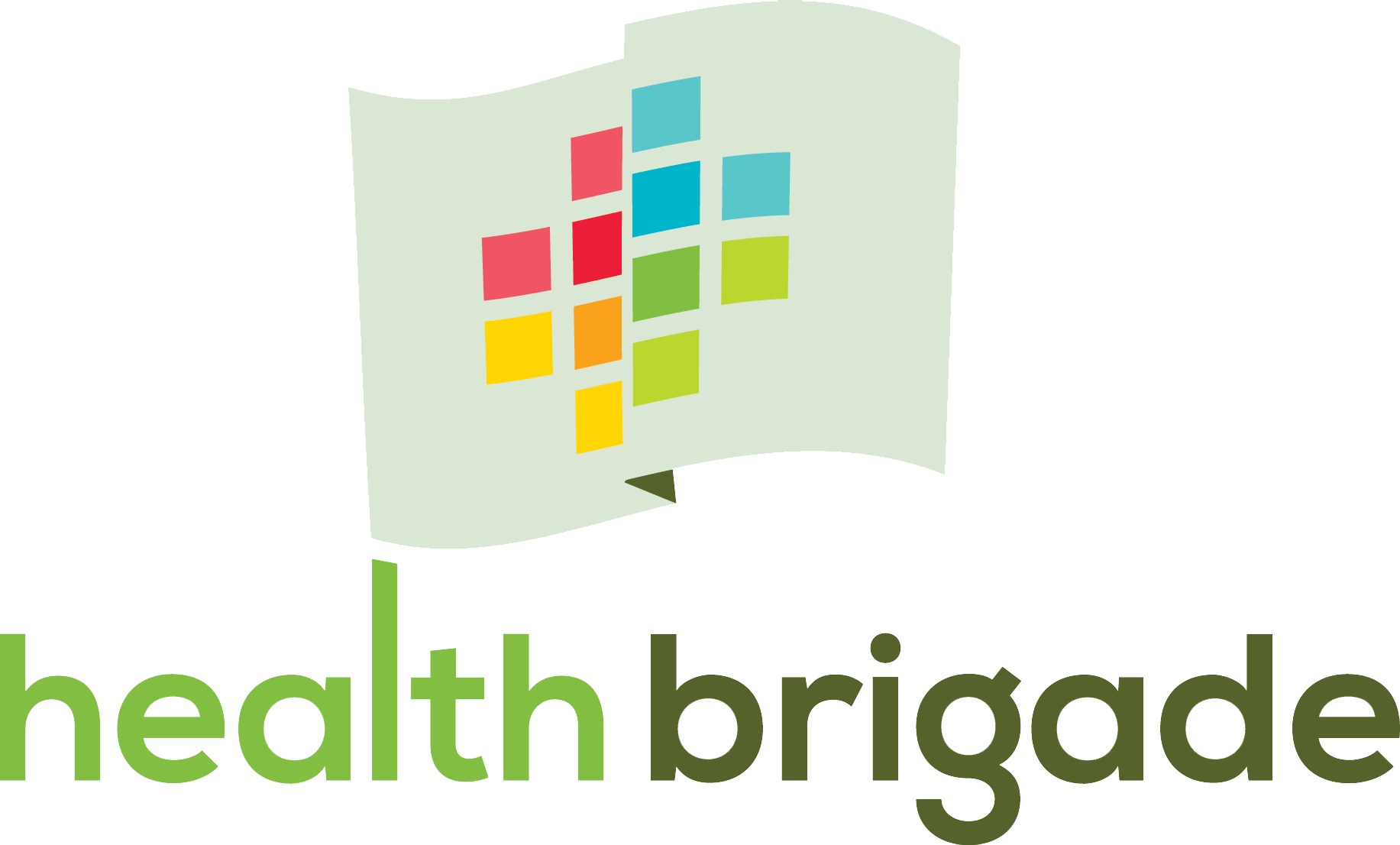COVID-19 Awareness
Major aspects of the Emergency Temporary Standard; note that these guidelines apply BOTH to employees and to volunteers: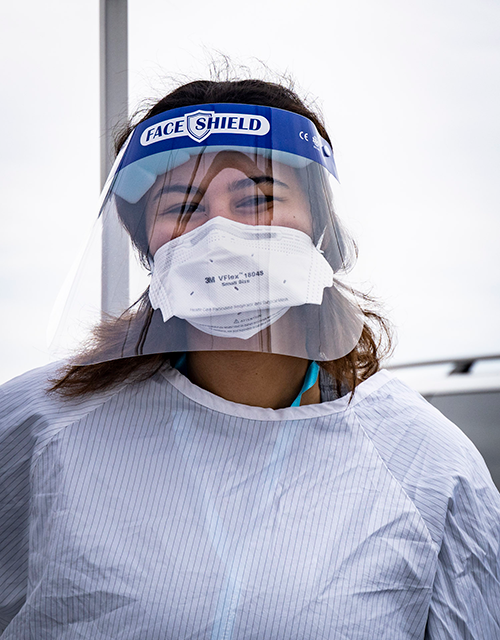
- Employers shall classify employees’ exposure risk
- Employers shall implement a system for employee self-assessment and screening for COVID-19 symptoms
- Employers shall implement procedures that will prevent employees and other persons from infecting healthy employees (engineering controls, work practice controls, physical distancing, PPE, and sanitation practices)
- Employers shall establish a system to ensure employees known or suspected of having COVID-19 do not come to work, as well as procedures for them to return to work
- Employers shall refrain from discharging or in any way discriminating against an employee because they have raised a reasonable concern about infection control regarding the SARS-CoV-2 virus or COVID-19 disease in the workplace with you, other employees, a government agency, or to the public through any form of media
- Employers with eleven or more employees and jobs classified as medium risk, or an employer with any number of employees and jobs classified as high or very high risk, must prepare a written Infectious Disease Preparedness and Response Plan
- Employers with medium, high, and very high-risk workplaces must provide COVID-19 training to employees within 30 days of the effective date. Lower-risk places of employment must provide employees with basic written or oral information on COVID-19 hazards and measures to minimize exposure
People with COVID-19 have had a wide range of symptoms reported, ranging from mild symptoms to severe illness. Symptoms may appear 2-14 days after exposure to the virus. People with these symptoms may have COVID-19: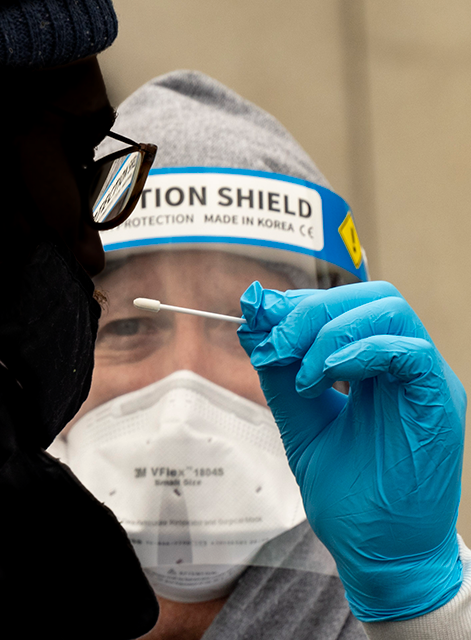
- Fever or chills
- Cough
- Shortness of breath or difficulty breathing
- Fatigue
- Muscle or body aches
- Headache
- New loss of taste or smell
- Sore throat
- Congestion or runny nose
- Nausea or vomiting
- Diarrhea
This list does not include all possible symptoms. CDC will continue to update this information as we learn more about COVID-19.
Look for emergency warning signs for COVID-19. If someone is showing any of these signs, seek emergency medical care immediately:
- Trouble breathing
- Persistent pain or pressure in the chest
- New confusion
- Inability to wake or stay awake
- Bluish lips or face
When seeking care, notify the operator or provider that you are seeking care for someone who has or may have COVID-19.
The CDC and other national recognized health organizations are still learning about how the virus spreads.
- COVID-19 is thought to spread mainly through close contact from person-to-person — within about 6 feet
- COVID-19 appears to spread through respiratory droplets produced when an infected person coughs, sneezes, or talks; these droplets can land in the mouths or noses of people who are nearby or possibly be inhaled into the lungs
- Close congregate settings increase the risk of contracting COVID-19
- The more closely a person interacts with others who may be infected with COVID-19, and the longer that interaction, the higher the risk of COVID-19 spread
- Some individuals who are asymptomatic or pre-symptomatic may be able to spread COVID-19 even without displaying any obvious signs or symptoms
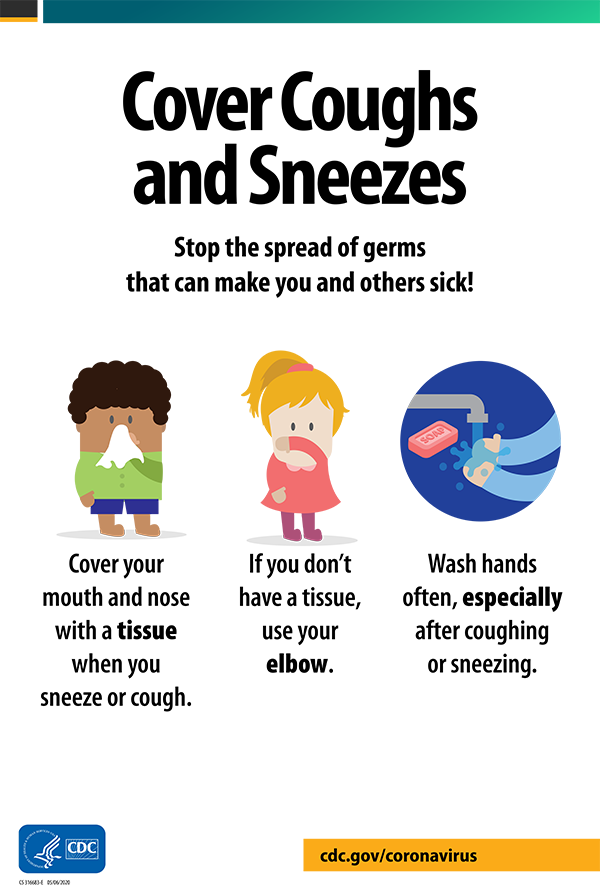
Risk factors of severe COVID-19 illness
Among adults, the risk for severe illness from COVID-19 increases with age, with older adults at highest risk.
- Severe illness means that the person with COVID-19 may require hospitalization, intensive care, or a ventilator to help them breathe.
People of any age with the following conditions are at increased risk of severe illness from COVID-19:
- Cancer
- Chronic kidney disease
- COPD (chronic obstructive pulmonary disease)
- Immunocompromised state (weakened immune system) from solid organ transplant
- Obesity (body mass index [BMI] of 30 or higher)
- Serious heart conditions, such as heart failure, coronary artery disease, or cardiomyopathies
- Sickle cell disease
- Type 2 diabetes mellitus
Based on what we know at this time, people with the following conditions might be at an increased risk for severe illness from COVID-19:
- Asthma (moderate-to-severe)
- Cerebrovascular disease (affects blood vessels and blood supply to the brain)
- Cystic fibrosis
- Hypertension or high blood pressure
- Immunocompromised state (weakened immune system) from blood or bone marrow transplant, immune deficiencies, HIV, use of corticosteroids, or use of other immune weakening medicines
- Neurologic conditions, such as dementia
- Liver disease
- Pregnancy
- Pulmonary fibrosis (having damaged or scarred lung tissues)
- Smoking
- Thalassemia (a type of blood disorder)
- Type 1 diabetes mellitus
To minimize COVID-19 hazards, all employees who are in the agency must comply with the following:
- Frequent hand washing
- Maintain social distance of 6 feet between each employee
- Wear a mask in all common areas and in your office when another employee is present
- Sanitation/disinfection of common areas
- Vehicle procedures — sanitize vehicle when done driving
- If customers or vendors are in the agency, they must wear a mask
- When meeting with clients or seeing patients in the medical clinic, a surgical face mask, face shield, and gloves will be worn
- For high risk environments, a respirator and face shield/eye protection or a surgical mask with face shield, gown, and gloves will be worn
Each day every employee or volunteer who enters the office should be aware that by entering the office you are agreeing that you would answer the following screening questions with a NO:
- Are you currently suffering from any of the following symptoms – fever, cough, shortness of breath, sore throat, new loss of smell or taste, and/or gastrointestinal problems, including nausea, diarrhea, and vomiting?
- Have you lived with, or had close contact with, someone in the last 14 days diagnosed with or displaying the symptoms of COVID-19?
- Have you traveled via plane internationally or domestically in the last 14 days?
- If the answer to any of these questions is YES you must discuss with the Medical Director prior to returning to work
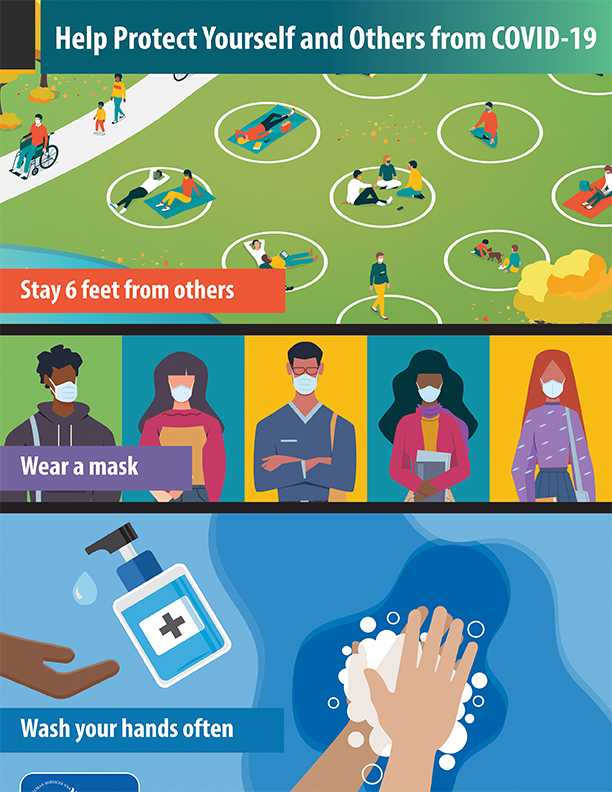
The following employees or volunteers should not report to work and, upon notification to the Director, will be removed from the regular work schedule:
- Employees or volunteers who display COVID-19 symptoms, such as fever, cough, shortness of breath, sore throat, new loss of smell or taste, and/or gastrointestinal problems, including nausea, diarrhea, and vomiting, whether or not accompanied by a formal COVID-19 diagnosis;
- Employees or volunteers who, in the last 14 days, have had close contact with and/or live with any person having a confirmed COVID-19 diagnosis; and
- Employees or volunteers who, in the last 14 days, have had close contact with and/or live with any person displaying COVID-19 symptoms, such as fever, cough, shortness of breath, sore throat, new loss of smell or taste, and/or gastrointestinal problems, including nausea, diarrhea, and vomiting.
- When the Director receives notification of an employee or volunteer who has been confirmed positive, and who has been at the agency, she will notify employees within 24 hours or as soon as possible.
Employees or volunteers who were themselves diagnosed with COVID-19 may only return to work upon confirmation of the cessation of symptoms and contagiousness, proof of which may be acquired via the test-based strategy or the non-test-based strategy. The test-based strategy is preferred but relies upon the availability of testing supplies and laboratory capacity. Under this strategy, employees or volunteers may discontinue isolation and return to work upon achieving the following conditions:
- Resolution of fever without the use of fever-reducing medications;
- Improvement in respiratory symptoms (e.g., cough, shortness of breath); and
- Negative results of an FDA Emergency Use Authorized molecular assay for COVID-19 from two consecutive nasopharyngeal swab specimens collected at least 24 hours apart.
Under the non-test-based strategy, employees or volunteers may discontinue isolation and return to work upon achieving the following conditions:
- At least 3 days (72 hours) have passed since recovery defined as resolution of fever without the use of fever-reducing medications;
- Improvement in respiratory symptoms (e.g., cough, shortness of breath); and
- At least 10 days have passed since symptoms first appeared.
Employees or volunteers who come into close contact with or who may live with an individual with a confirmed diagnosis or symptoms may return to work after either 14 days have passed since the last close contact with the diagnosed and/or symptomatic individual. This includes the diagnosed and/or symptomatic individual receiving a negative COVID-19 test.
- Sick employees or volunteers should be actively encouraged to stay home by their supervisors.
- Health Brigade will follow state and federal guidance for return to work guidance.
- Guidance from the employee’s or volunteer’s health care provider will also be considered.
Important links:
- Training Certification Form: https://www.doli.virginia.gov/wp-content/uploads/2020/07/Training-Certification.xlsx
- Text of Regulation: http://www.doli.virginia.gov/wp-content/uploads/2020/07/RIS-filed-RTD-Final-ETS-7.24.2020.pdf
- VOSH Resource Page: https://www.doli.virginia.gov/covid-19-outreach-education-and-training/
- VRSA Resource Page: https://www.vrsa.us/resources/pandemic-preparedness/
